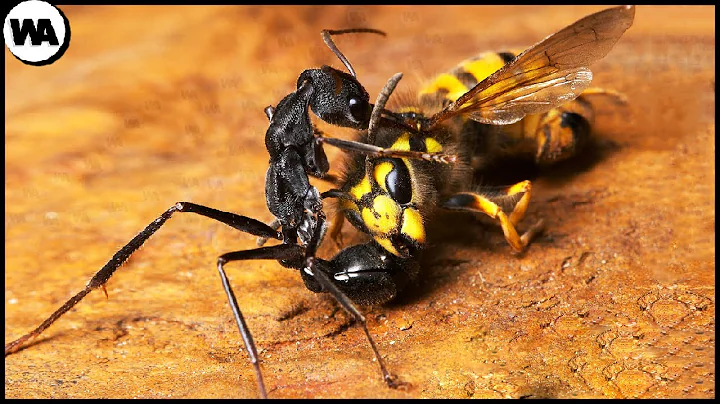velvet ants also known as stingless wasps. Don't look at it without wings. But the thorns on their bodies are highly poisonous, and one thorn can knock down a cow. If you encounter them, it's best to keep your distance! The size of velvet ants is 6-20 mm, while the size range of regular ants is 0.7 to 52 mm. Therefore, ordinary ants are much larger than this.

Females are wingless and have bright colors and fuzzy hairs on their bodies, while males are larger, have wings and look like regular wasps. Red velvet ants have a hard exoskeleton and their body consists of their abdomen and thorax, both of which have short hairs.

These ants are generally not aggressive and will not sting unless provoked. Males and females can squeak as a warning signal. During the hot summer months, females like to move around in open fields, while males like to perch on flowers.

Velvet ants come from the family of Formicidae. The females have fluffy hair all over their bodies, hence the name " Velvet ". One of their basic characteristics is that they have a hard exoskeleton as well as a thorax and abdomen. Female velvet ants are quite large and brightly colored, with four colors: red, black, yellow and brown.
According to research, velvet ants (Dasymutilla occidentalis) can run as fast as 0.3 miles per hour (0.5 kilometers per hour). Adult velvet ants can only survive by eating nectar from flowers as well as larvae and other insects such as bees, wasps, flies and beetles.

Velvet ants habitats are found throughout the world, especially in arid areas. They thrive in wetlands, woods and urban lands. Velvet ants are typically parasitic and can be found wherever their host species is present. The host species are wasp and bumble bee .

In order to mate and find potential female velvet ants, adult male velvet ants fly low to the ground to find the pheromones released by the female. After mating, the male leaves and the female becomes parasitic in nature, wandering around and trying to lay eggs in the ground nests of wasps and bumblebees to ensure the safety of her larvae.
Once she finds a suitable nest she will chew a hole and lay her eggs in the host's pupa, then leave the nest by plugging the hole with some dirt. The eggs turn into larvae. They hatch quickly and eat their host. They then camouflage themselves as wasps in the same nest throughout the winter until they reach adulthood in the spring.





















